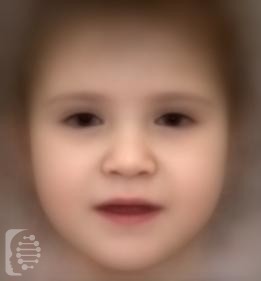What is Chromosome 1p36 Deletion syndrome?
Chromosome 1p36 Deletion was identified in the 1990’s, although cases were recorded as early as the 1980’s. It is a rare chromosomal deletion syndrome.
Severe intellectual disability is one of the main symptoms of the syndrome. Affected individuals also generally have limited to absent speech development and ability. Behavioral issues are also a common feature of this rare disease.
Syndrome Synonyms:
Monosomy 1p36 Syndrome
What gene change causes Chromosome 1p36 Deletion syndrome?
The syndrome is caused due to the loss of a small part of chromosome 1.
Only around 20% of the cases diagnosed are inherited as a result of a parent who carries a balanced translocation. The remainder are de novo or new deletions.
In some cases, a genetic syndrome may be the result of a de-novo mutation and the first case in a family. In this case, this is a new gene mutation which occurs during the reproductive process.
What are the main symptoms of Chromosome 1p36 Deletion syndrome?
Facial and physical characteristics include a small head, large and broad forehead, a pointed chin and flat nasal bridge. Individuals may also experience hearing and vision loss.
Generally, individuals experience severe speech delay and many develop limited to zero speech. Low muscle tone is a serious symptom in infancy and may also affect an infant’s ability to feed.
Other health conditions associated with the syndrome include seizures, and heart defects (noncompaction cardiomyopathy being one example).
Possible clinical traits/features:
Intellectual disability, Myopathy, Muscular hypotonia, Leukoencephalopathy, Abnormality of immune system physiology, 11 pairs of ribs, Abnormality of female external genitalia, Abnormal lung lobation, Metatarsus adductus, Microtia, Neurological speech impairment, Neuroblastoma, Myopia, Narrow mouth, Low-set ears, Long philtrum, Low-set, posteriorly rotated ears, Lower limb asymmetry, Wide anterior fontanel, Thickened helices, Submucous cleft hard palate, Renal cyst, Pointed chin, Foot polydactyly, Polymicrogyria, Posteriorly rotated ears, Nystagmus, Sensorineural hearing impairment, Obesity, Ocular albinism, Oppositional defiant disorder, Optic atrophy, Optic disc pallor, Stereotypy, Patent foramen ovale, Pes cavus, Pachygyria, Patent ductus arteriosus, Seizure, Self-mutilation, Rib fusion, Hypoplasia of penis, Short foot, Short toe, Hip dysplasia, Horizontal eyebrow, High palate, Hydrocephalus, Short stature, Hemiplegia/hemiparesis, Hepatic steatosis, Depressed nasal bridge, Gastroesophageal reflux, Gait dis
How is it diagnosed?
To find out if someone has a diagnosis of Chromosome 1p36 Deletion syndrome, it is important to have a consultation and evaluation with a clinical genetic specialist. Specialists may also suggest specific genetic testing or other types of tests to help reach a diagnosis. FDNA’s AI technology can help speed up the diagnostic process by analyzing facial features and other health information.

